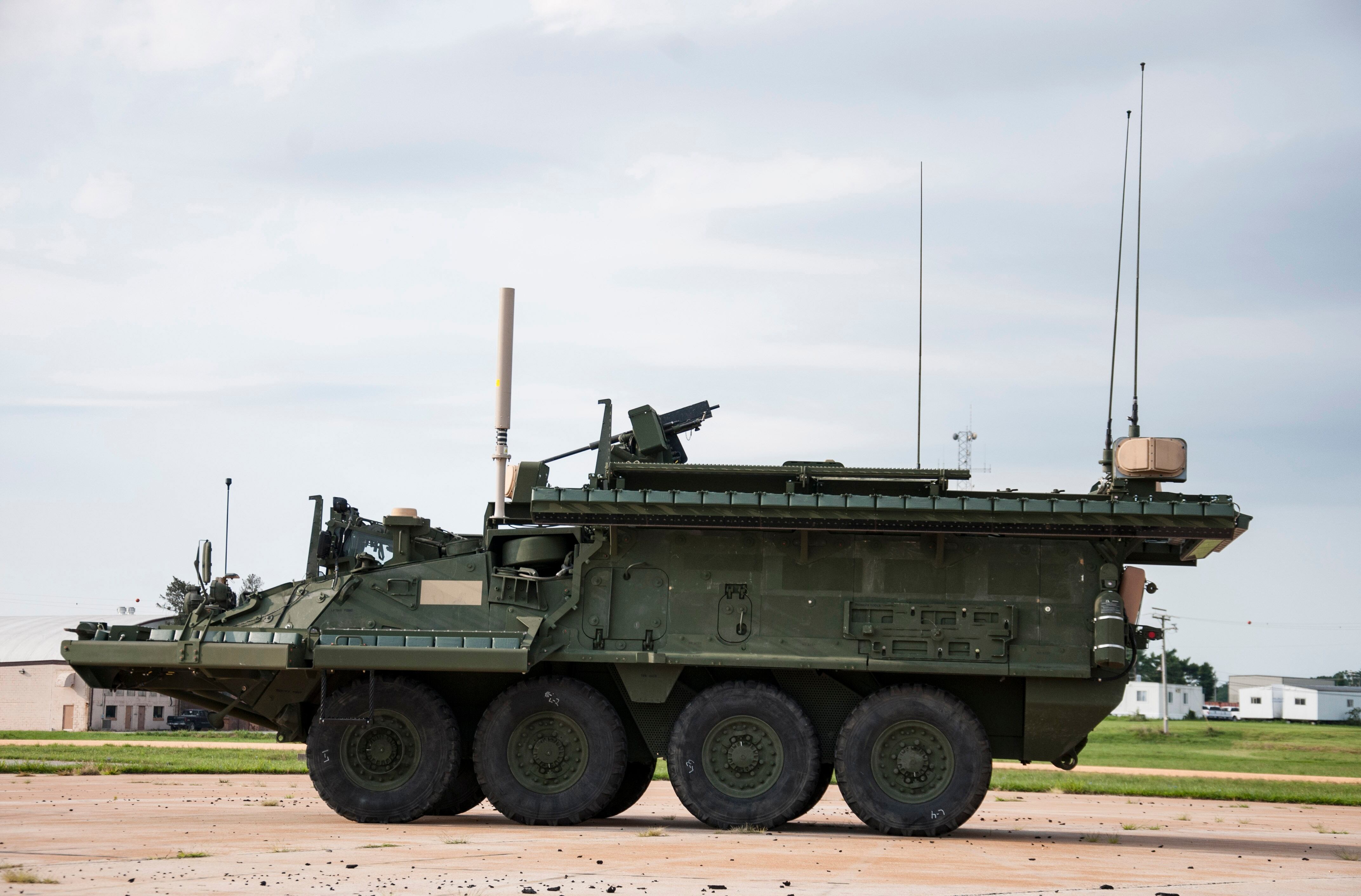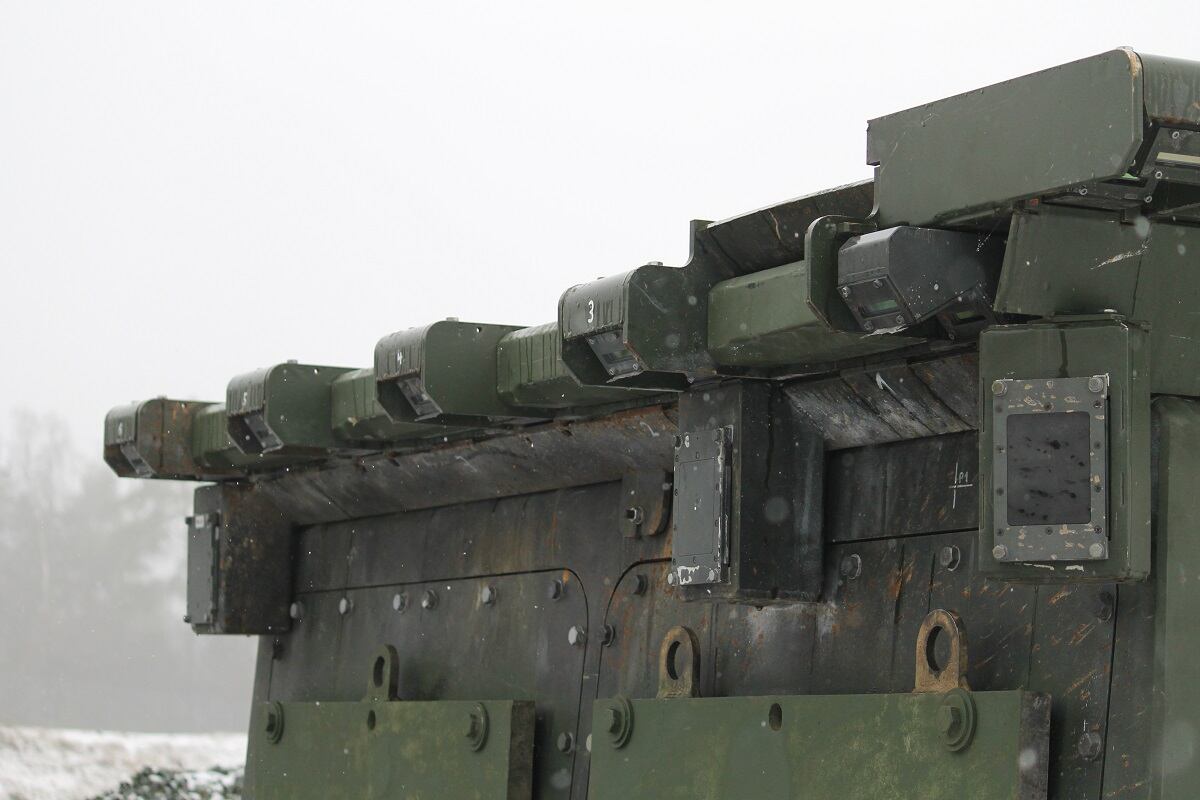WASHINGTON — The U.S. Army is working through when it can field an interim active protection system on the Bradley Infantry Fighting Vehicle after fixing several technical problems that cropped up in testing and experiencing budget cuts in the recently passed fiscal 2020 National Defense Authorization Act.
The issues identified in testing delayed the program by roughly a year, Lt. Col. Matthew Johnson, the Army’s program manager for the Bradley, told Defense News in a recent interview.
But the congressional budget cuts to the program for FY20 mean the Army won’t be able to simultaneously test and begin production on APS-equipped Bradley vehicles as planned, which has thrown the program further off course.
The Bradley APS program went through an Army Requirements Oversight Council review in November 2018 to decide whether it could proceed to field one brigade of the IMI Systems-made Iron Fist-equipped Bradleys by the end of the fourth quarter in FY20.
Due to performance of the system in the characterization testing, Johnson said, the program office presented a course of action to the Army council that would delay fielding by one year to address failures to the system.
While the Army is on a path to make those necessary fixes, Johnson said, the plan also laid out a process where the service would simultaneously test and produce Iron Fist-equipped Bradleys. That would have kept the Army on track, but with budget cuts, the program office had to make the hard decision to prioritize funding toward the fielding of the service’s Bradley A4 vehicle, Johnson said.
Roughly $200 million across several budget cycles had to be shifted away from the Iron Fist program.
RELATED

The Army can, for now, continue with its planned FY21 testing as well as execute the engineering and manufacturing development portion of the program, Johnson said. But the discussions are ongoing bout when production can begin — whether that’s in FY21 or FY22, he added.
“The Army has to manage its priorities, not just within Bradley but across all combat vehicles and programs for that matter, in general, as they plan the budget,” Johnson said. “We are working with the Army leadership to try to figure out ways to make this happen.”
Because the budget cuts didn’t happen for FY20 until the Army had finalized its FY21 request, the possible production delays for the Bradley APS program is not reflected in justification documents accompanying the FY21 request.
And since the Army is unsure when Iron Fist vehicles will enter production, the service at the end of January 2020 had to cancel its solicitation to industry, which it had posted in late 2019.
“We basically made a decision to pull the solicitation because the Army can’t really move forward in acting like it’s going to award a contract when there’s no money physically in the bank account to back it up,” Johnson said.
Technical difficulties
The Pentagon’s chief weapons tester issued a report earlier this year that laid out problems with Iron Fist in its characterization testing ahead of fielding.
The Army wrapped up the first phase of testing Iron Fist on Bradley in FY18, and the second phase of testing is scheduled for FY21.
The report notes the currently fielded Bradley A3 doesn’t generate enough power to operate the APS system, but that the Bradley A4 variant will support it. And while the APS system is the “Light Decoupled” version of Iron Fist, it adds approximately 1,543 pounds to the vehicle.
But the Bradley’s power problem and the added weight wasn’t the issue that caused the need for tweaking Iron Fist.
The first phase of testing revealed “an inconsistent capability” of the APS to intercept threats “largely due to countermunition dudding and power failures to the launcher,” the report stated.
The power failures to the launcher have nothing to do with the A3 version of the Bradley, Johnson said. “The test asset that we used for characterization testing was a modified A3 that was able to provide enough power to not only power the vehicle but to power the Iron Fist system as well.”
The power failures were actually internal to the Iron Fist system “in terms of a miscalculation of how much power the system needed to draw to orient itself to be able to engage the threat,” Johnson added.
Elbit Systems — which bought IMI Systems — and its partner General Dynamics Ordnance and Tactical Systems were able to identify the reasons for the misses — and/or dudding — “and they were able to propose some fixes that we actually took to the [Army Requirements Oversight Council] in 2018,” Johnson said.
The companies have largely addressed the concerns related to the inconsistencies in tests, and the Army is under contract to finish out the engineering and manufacturing development phase, which would allow the service to take several systems into testing, according to Johnson.
“As of right now, the system is performing as expected with those changes,” he said.
RELATED

Bradley A4 coming soon
The A4 is an important upgrade to the Bradley that buys back capability lost over the years the vehicle has been in service, during which it increased in weight to add other capability, Johnson said.
The Army is anticipating taking receipt of the first Bradley A4, along with several others, by the end of the month, he said. The vehicles will go into production verification tests in April followed by an operational test in September, he noted.
Once testing is complete, the first 138 A4 vehicles will be in a position to be fielded to an Army pre-positioned stock location in Europe in the fourth quarter of FY21.
The first unit equipped with the A4 is scheduled for FY22. That unit is currently identified as the 2nd Brigade Combat Team, 3rd Infantry Division out of Fort Stewart, Georgia. The Army will spend 10 months training the unit.
The service plans to field the next brigade in less than a year toward the end of FY22 or the beginning of FY23.
Jen Judson is an award-winning journalist covering land warfare for Defense News. She has also worked for Politico and Inside Defense. She holds a Master of Science degree in journalism from Boston University and a Bachelor of Arts degree from Kenyon College.








